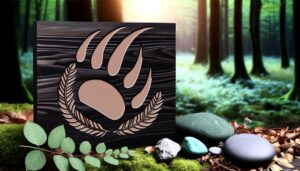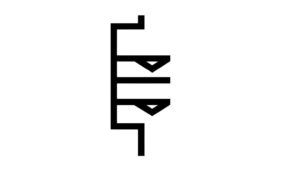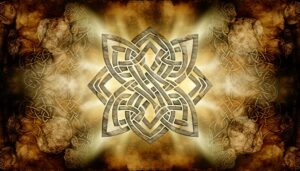Choosing the Perfect Celtic Symbol for Mother and Daughter Bonds
In Celtic tradition, several symbols epitomize the profound bond between mother and daughter. The Motherhood Knot, with its loops and spirals, embodies the eternal, unbreakable connection inherent in maternal relationships.
The Trinity Knot also holds significance, representing life, death, and rebirth, highlighting the interconnectedness and continuity of these bonds. The Tree of Life symbolizes growth and familial lineage, reinforcing the deep-rooted ties within families.
Moreover, the Dara Knot, inspired by the oak tree, symbolizes strength and wisdom, mirroring the enduring resilience found in mother-daughter relationships. To explore the depths of these symbols and their cultural significance, continue on.
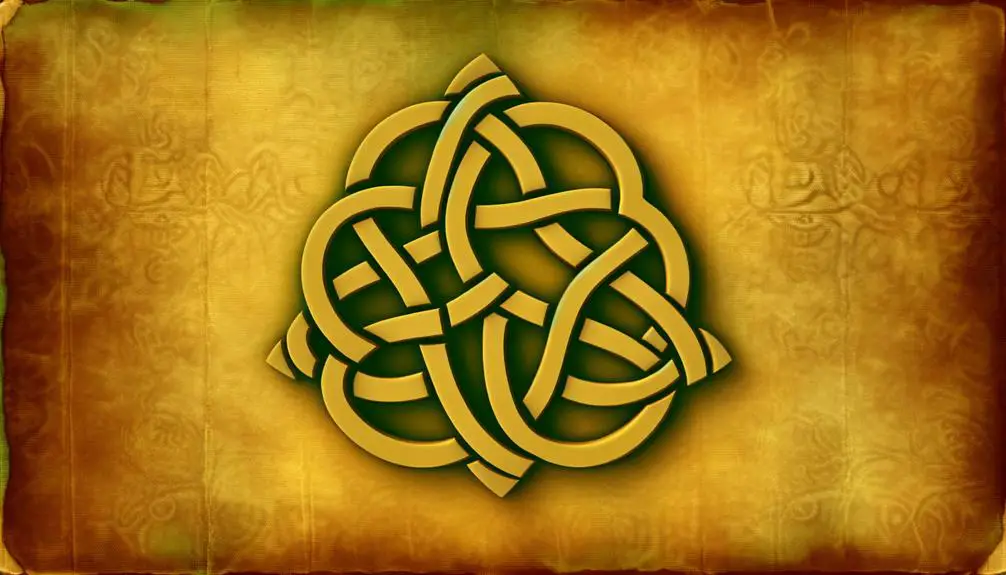
Key Takeaways
- The Motherhood Knot symbolizes the eternal bond between mother and daughter through interconnected, unbroken loops.
- The Dara Knot represents the strength, wisdom, and resilience passed through generations, akin to the enduring relationship between mother and daughter.
- The Trinity Knot conveys the interconnectedness and continuity of life, death, and rebirth, reflecting the deep bond between mother and daughter.
- The Tree of Life symbolizes the interconnectedness of all living things, emphasizing ancestry and family lineage, ideal for representing mother-daughter connections.
- Customizing Celtic symbols can infuse personal meaning, ensuring the design captures shared values, memories, and aspirations of the mother-daughter relationship.
Celtic Knot Meanings
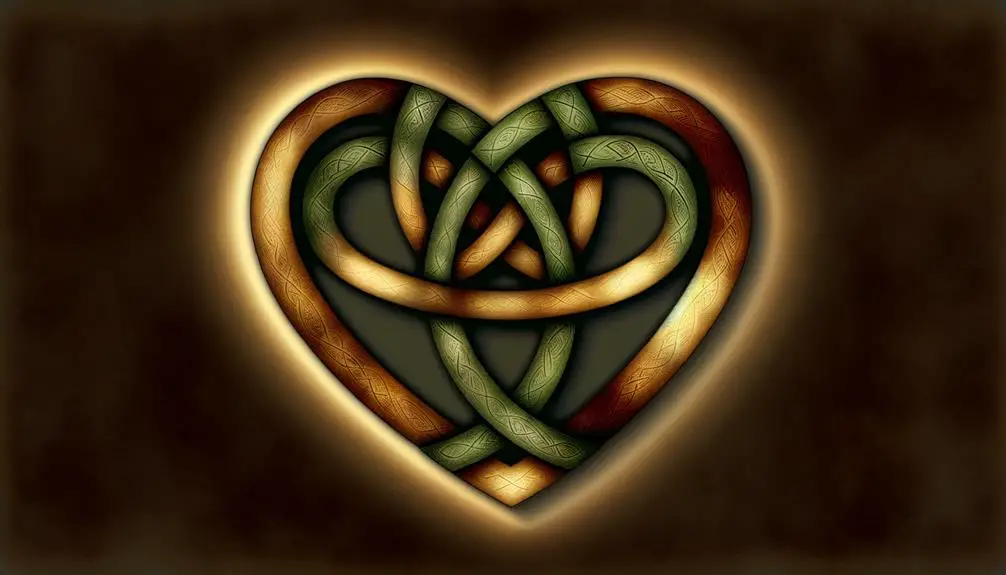
Often revered for their intricate designs and profound symbolism, Celtic knots hold significant meaning within the context of Celtic culture and heritage. These ancient patterns, characterized by their unbroken loops, are emblematic of eternity and interconnectedness.
Each knot, devoid of a clear beginning or end, serves as a metaphor for life's cyclical nature and the enduring bonds between individuals. Within the cultural framework, these knots are often used to convey themes of loyalty, faith, and love. Their complex interweaving lines can also symbolize the intricate relationships that define human experience.
This cultural symbolism makes Celtic knots especially poignant in contexts where deep, lasting connections—such as those between mother and daughter—are celebrated and cherished.
The Trinity Knot
The Trinity Knot, also known as the Triquetra, is a prominent symbol in Celtic tradition that conveys profound meanings related to the interconnectedness of three distinct but interdependent elements.
Historically, it has been interpreted to represent the tripartite nature of existence: life, death, and rebirth. Its continuous, unbroken line underscores the concept of eternity and the cyclical nature of existence.
In cultural contexts, the Trinity Knot is often associated with spiritual growth, unity, and protection. The symbol's elegance lies in its simplicity, yet it encapsulates complex themes of interrelation and continuity.
Its adoption in various art forms and personal tokens highlights its enduring relevance and the deep-rooted significance it holds within Celtic heritage.
The Motherhood Knot
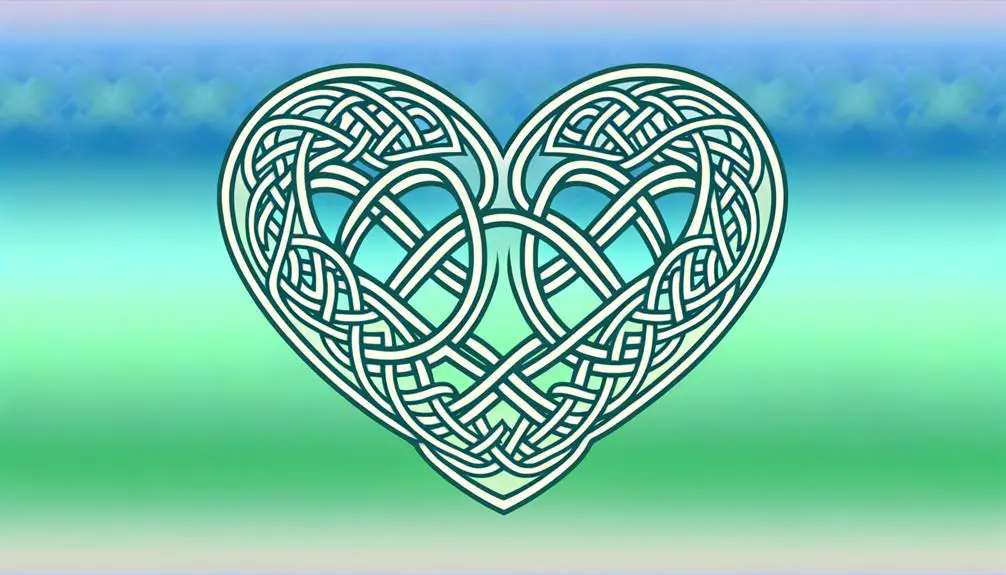
The Motherhood Knot, characterized by its symbolic interwoven hearts, epitomizes the eternal maternal connection central to Celtic tradition.
This intricate design not only signifies the unbreakable bond between mother and child but also embodies the broader Celtic knot meaning of interconnectedness and continuity.
Examining its cultural significance reveals a profound reverence for the cyclical nature of life and familial ties in Celtic heritage.
Symbolic Interwoven Hearts
In the realm of Celtic symbolism, the interwoven hearts of the Motherhood Knot encapsulate the profound and enduring bond between mother and daughter, reflecting both unity and the continuous cycle of life.
These intertwining hearts are emblematic of interconnectedness, symbolizing how the lives of mother and daughter are inextricably linked through shared experiences and mutual support.
The artistic design often incorporates intricate patterns, each loop and curve a tribute to the complexities and depths of maternal love. Rooted in ancient Celtic traditions, this symbol also embodies the cyclical nature of existence, capturing the essence of life's perpetual renewal.
Therefore, it holds immense cultural significance, representing the timeless and unbreakable connection that transcends generations.
Eternal Maternal Connection
Building upon the symbolism of interwoven hearts, the concept of the Motherhood Knot further accentuates the eternal maternal connection, representing an unending bond that is deeply enshrined in Celtic culture.
This intricate design, often comprising loops and intertwined lines, signifies the perpetual cycle of life, love, and heritage between mother and daughter. Its continuous form reflects the unbreakable and enduring nature of maternal love, transcending time and space.
Rooted in Celtic traditions, the Motherhood Knot serves not only as a symbol of familial unity but also as a tribute to the spiritual and emotional ties that bind generations. This motif highlights the profound respect and reverence Celtic culture holds for maternal relationships, celebrating their everlasting presence and influence.
Celtic Knot Meaning
Delving into the intricate symbolism of the Motherhood Knot, one uncovers a profound representation of the interconnectedness and cyclical nature of life, deeply embedded within Celtic heritage. The Motherhood Knot, often depicted as two interwoven Celtic knots, symbolizes the eternal bond between mother and daughter, a connection that transcends time and space. This emblem encapsulates not only the nurturing aspect of motherhood but also the shared strength and resilience.
| Aspect | Symbolism |
|---|---|
| Interwoven Knots | Eternal Bond |
| Endless Loops | Continuity of Life |
| Symmetry | Balance and Harmony |
| Intricate Patterns | Complexity of Relationships |
| Celtic Heritage | Cultural Legacy and Tradition |
The Motherhood Knot, hence, stands as an enduring tribute to familial love and the perpetuity of maternal wisdom.
The Dara Knot
Rooted deeply in ancient Celtic tradition, the Dara Knot symbolizes the intricate connection between inner strength and wisdom. This knot derives its name from the Irish word 'Doire,' meaning oak tree, which signifies enduring power and resilience. The Dara Knot's complex interwoven patterns represent:
- Strength: Just as the oak tree stands tall and firm, the knot embodies enduring fortitude.
- Wisdom: The intricate design mirrors the tree's roots, highlighting the importance of deep knowledge and understanding.
- Connection: Its endless loops illustrate the seamless bond between individuals, particularly relevant to the mother-daughter relationship.
Culturally, the Dara Knot serves as a profound emblem of unity and continuity, resonating with those who appreciate the strength and wisdom passed through generations.
Spiral of Life
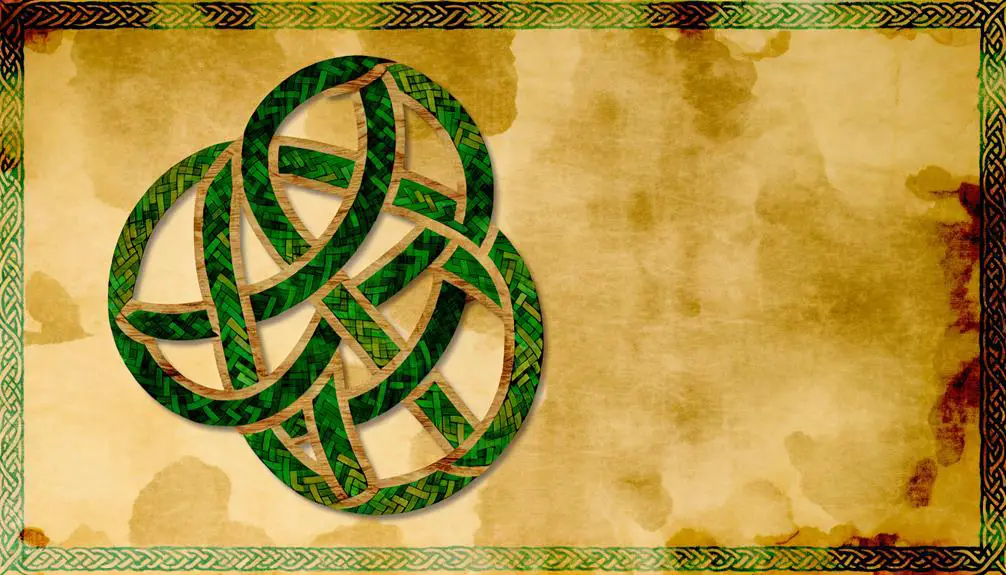
The Spiral of Life, an iconic Celtic symbol, represents the cyclical nature of existence, emphasizing the perpetual flow of life, death, and rebirth. This ancient motif, often depicted as a single, continuous line spiraling outward, encapsulates profound philosophical and spiritual insights.
Rooted deeply in Celtic tradition, the Spiral of Life signifies growth, evolution, and the interconnectedness of all beings. Culturally, it holds immense significance, symbolizing the journey of the soul and its progression through various stages of life.
For mother and daughter relationships, this emblem poignantly illustrates the enduring bond and shared journey through life's transformations. By understanding this symbol, one gains a deeper appreciation for the timeless wisdom and interconnectedness inherent in Celtic lore.
The Claddagh Symbol
The Claddagh symbol, characterized by two hands clasping a heart topped with a crown, embodies profound cultural significance within Celtic traditions.
Each element of the design represents a core value: the hands signify friendship, the heart symbolizes love, and the crown denotes loyalty.
This rich symbolism makes the Claddagh a potent emblem for mother-daughter relationships, encapsulating the enduring bond of love, trust, and fidelity.
Design and Elements
Representing love, loyalty, and friendship, the Claddagh symbol is a profound emblem in Celtic culture that encapsulates deep values and emotional bonds. Its design is composed of three distinct elements, each bearing significant meaning:
- Heart: Positioned at the center, the heart signifies love, an essential aspect of the mother-daughter relationship.
- Crown: Sitting atop the heart, the crown symbolizes loyalty, reflecting the unwavering bond and trust shared between mother and daughter.
- Hands: Enclosing the heart and crown, the hands denote friendship, underscoring the supportive and nurturing nature of this familial connection.
This intricate design not only serves as a visual representation of these values but also as a cultural artifact that honors the enduring and multifaceted relationship between mothers and daughters.
Symbolic Meaning
Rooted deeply in Celtic culture, the Claddagh symbol extends beyond its intricate design to embody a rich tapestry of symbolic meanings that resonate profoundly within the mother-daughter relationship.
Comprised of a heart, crown, and hands, this emblem conveys love, loyalty, and friendship—qualities integral to the maternal bond. The heart epitomizes the deep affection and unconditional love a mother and daughter share.
The crown signifies enduring loyalty and honor, reflecting the trust and respect inherent in their relationship. The hands, cradling the heart, symbolize friendship and protection, underscoring the nurturing and supportive roles they play in each other's lives.
This Celtic icon, hence, serves as a poignant reminder of the multifaceted and enduring nature of the mother-daughter connection.
Tree of Life
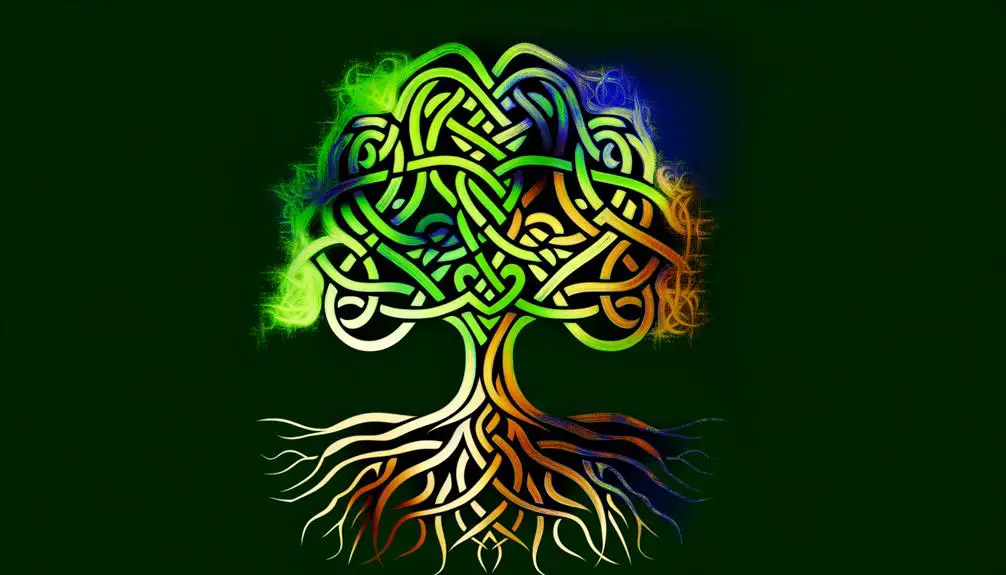
Intricately woven into the tapestry of Celtic culture, the Tree of Life symbolizes the interconnectedness of all living things, embodying profound spiritual and philosophical significance. This emblematic tree, known as Crann Bethadh in Gaelic, holds various layers of meaning:
- Connection and Unity: The roots and branches intertwine, representing the bond between heaven and earth, life and death.
- Growth and Rebirth: As a tree undergoes cycles of growth, decay, and renewal, it mirrors the human journey through life's stages.
- Ancestry and Heritage: The Tree of Life is a reminder of one's roots, emphasizing the importance of family lineage and ancestral wisdom.
In the context of mother and daughter symbology, it underscores enduring familial bonds and shared spiritual journeys.
The Awen Symbol
The Awen symbol, composed of three radiating rays, holds deep cultural significance in Celtic tradition, representing the harmony of opposites and the balance of male and female energies.
This triadic symbol is often interpreted as embodying the essence of inspiration, wisdom, and the interconnectedness of life forces. Each ray can symbolize various dualities, such as earth, sea, and sky or birth, life, and death, hence encapsulating the cycle of existence.
In the context of mother and daughter relationships, the Awen underscores a profound connection and mutual influence, embodying a balance of nurturing and growth. This intricate symbol not only alludes to personal and spiritual development but also reflects the broader Celtic worldview of unity and interdependence.
Celtic Cross
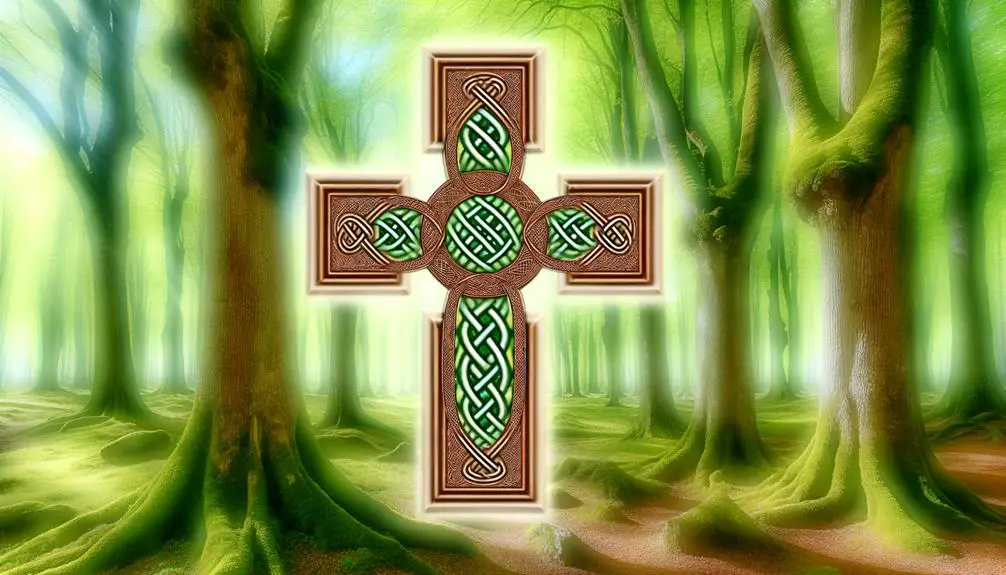
A profound symbol in Celtic heritage, the Celtic Cross seamlessly blends the ancient pagan reverence for nature with Christian iconography, reflecting a rich tapestry of cultural and spiritual synthesis.
Traditionally, this cross is characterized by a circular ring intersecting the cross's arms, symbolizing eternity and the cyclic nature of life.
Key elements of the Celtic Cross include:
- Symbolic Fusion: It merges pre-Christian sun worship with the Christian crucifix, embodying a harmonious coexistence of cultures.
- Ornate Design: Often adorned with intricate knotwork and interlacing patterns, it signifies interconnectedness and the complexity of life's journey.
- Cultural Legacy: It stands as a tribute to the enduring influence of Celtic art and spirituality, remaining a potent symbol in both secular and religious contexts.
Customizing Celtic Symbols
Customizing Celtic symbols allows individuals to infuse personal meaning into ancient designs, thereby creating a unique blend of historical reverence and contemporary relevance. This customization can involve integrating specific elements that resonate with the mother-daughter relationship, ensuring the symbol captures shared values, memories, and aspirations. The table below illustrates potential modifications:
| Element | Customization Idea |
|---|---|
| Knot Style | Incorporate initials or significant dates |
| Color | Utilize favorite colors or birthstones |
| Pattern Complexity | Simplify or elaborate based on personal taste |
| Symbol Fusion | Combine with other meaningful symbols (e.g., hearts) |
| Text Addition | Add inscriptions of meaningful quotes or names |
Conclusion
The intricate tapestry of Celtic symbols reveals a deeper cultural significance, each knot and spiral telling a story of ancient traditions and beliefs.
Among these, the Motherhood Knot stands out, embodying the profound bond between mother and daughter.
As one explores the meanings behind the Trinity Knot, Dara Knot, and other symbols, an appreciation for their enduring relevance emerges.
Yet, the question remains—how will these timeless symbols continue to evolve and resonate in contemporary society?


